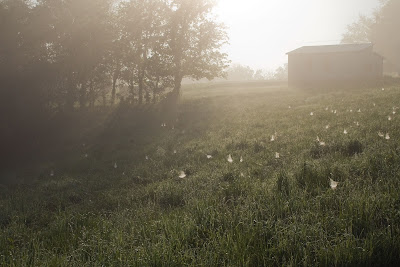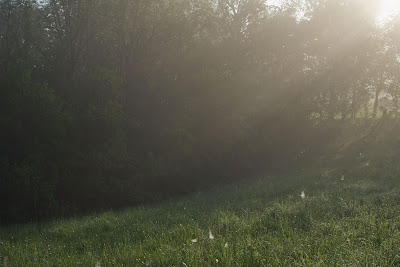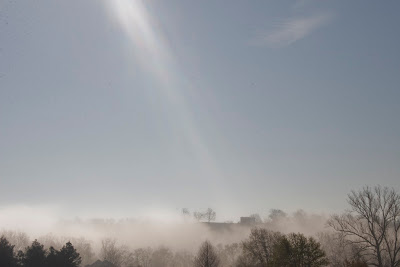 |
| river pictures 118 |
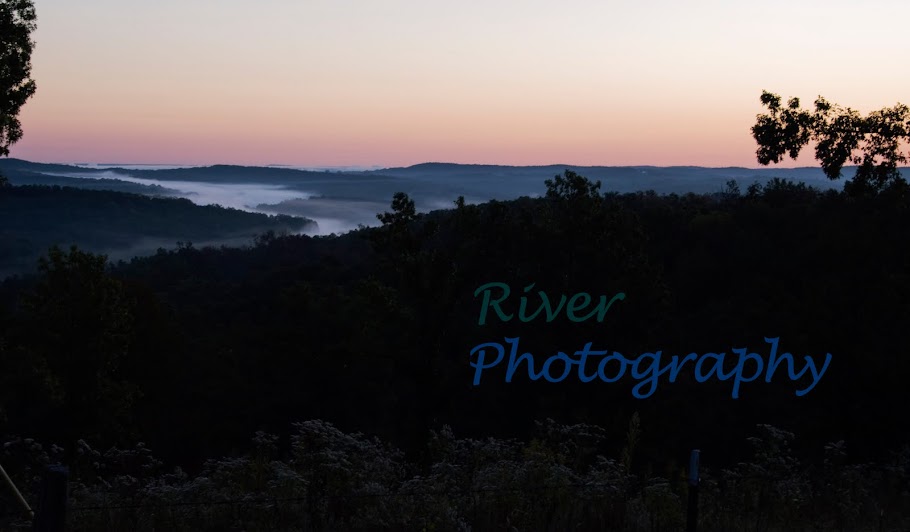
River pictures or river photography is a good way to start describing what I do. I live near the Missouri River in the beautiful state of, you guessed it, Missouri. I am a fine art photographer with a degree from the University of Missouri. Among other things, I hope to engage my readers in artistic discussion, some how-to tips, and lots of pictures.
Monday, December 5, 2011
Weekly River Pictures
Wednesday, November 30, 2011
Be a Photographer
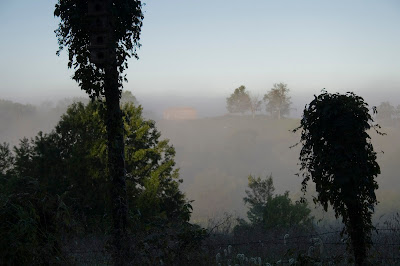 |
| river-photography_new barn |
This photograph just goes to show that anyone can be a photographer. These bird houses are in the far corner of my backyard. I glanced out the window that morning, saw we had a good cover of fog, and grabbed my camera. All you need is a good tripod, a manual camera, and a light meter. So go for it, be a photographer! You won't know if you are any good till you have tried it. What's nice about digital photography is that you don't have to spend money on printing everything. Take several thousand pictures then adjust whatever needs adjusting on the computer and then print a select few, big and awesome. This print looks its best at 20" by 30". That way the new barn is more visible on the foggy hillside and every little detail in the grass is enhanced.
Friday, November 25, 2011
Feel the Breeze
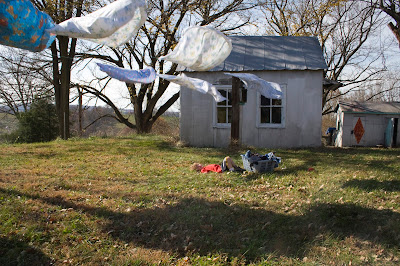 |
| pictures of home-clothesline |
Did you ever feel like the wind would pick you up and you could fly? Gazing up at the sheets flapping wildly, the branches blowing, and the clouds quickly passing by, taking me with them. The shadows are even in motion. Click this image to make it bigger and study it in the way my son might be looking at the sky. Can you feel the breeze?
Wednesday, November 23, 2011
Bird Pictures
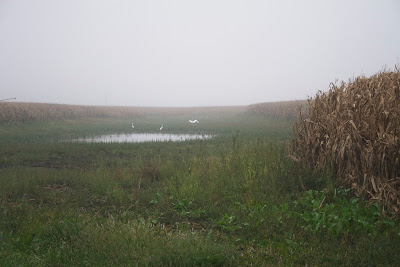 |
| cranes |
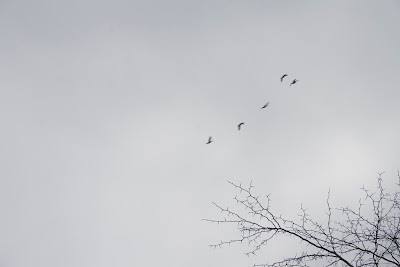 |
| canadian geese |
Cranes are interesting birds to watch. They were very camera shy, well probably human shy. When they were frightened off they flew really low across the tops of the corn stalks in a huge circle until they were back in the puddle enjoying tadpoles. I would move just a smidge closer and they were off in their circle route again, I think 1200 meters at least.
Friday, November 18, 2011
Pictures of Fog and the Depleted Land
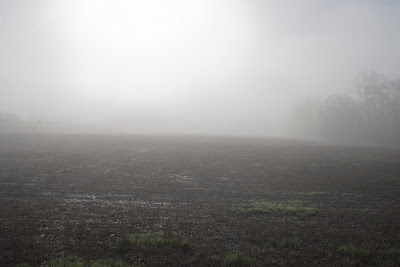 |
| flat-field fog |
 |
| used-field fog |
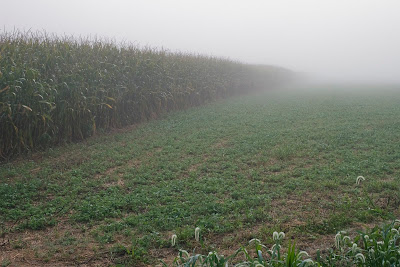 |
| field-corn fog |
These fog-field images were taken with no motive except that I liked the fog and the light combination and the fact that the lines or rows in these cases were leading into the light. While editing these foggy images I can see a lot more meaning in them.
The ethereal brightness of the fog could signify the unknown future of the farming industry here in the USA. Terry Evans expresses it as a "linear uniformity, leading to exhaustion". The root system of a cornfield is very shallow. We know growing the same crops year after year depletes the soil of nutrients. Are we on our way to a barren wasteland, how long will it take?
The heart of America, the work of the farmer, is supposedly what supports the American people. These fog-field photographs could also signify the movement from dependency on the North American farmer to a dependency on global import for our citizens’ food.
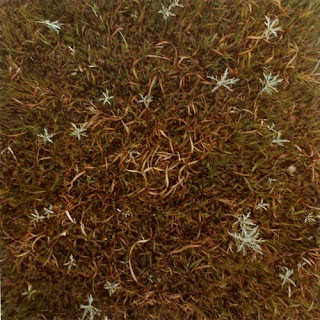 |
| Terry Evans Photography-prarie image 008 |
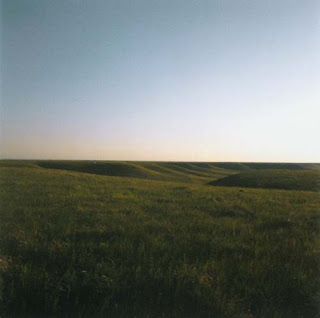 |
| Terry Evans Photography-prarie image14 |
Wednesday, November 16, 2011
Types of Landscape Photography
I dislike using the word type. It makes my work sound so typical. No artist wants their work to be typical. Yet for lack of a better word, I want to share a little about the way I often view landscape photographs, in two types.
First, let's go over the painterly type of landscape photography. While looking at a stack of my prints, a professor of mine once commented, "Your pictures look very painterly. As if they are landscape paintings." I agreed. Art often transcends the medium with which it was created. I think the biggest reason he would draw that conclusion about my images is that I use a painterly eye for composition. Arranging the elements of a landscape in the frame of my camera is similar to the way a painter would arrange the same elements on a canvas. An artist wants to keep the viewer interested in an photograph or painting by drawing the eyes from element to element, enjoying all the details.
Next, we'll go over the experiential type of landscape photography. You might notice that the second photograph does not include all the landscape elements that the first does. The light, fog, and dew on the webs and the grass are the same but this image is considering just one thing, the rays of light shining through the fog and catching the land. Highlighting this experience, this thing that is happening with the light is experiential landscape photography.
To illustrate these painterly and experiential types of landscape photography here are two photographs to compare and or contrast. These photographs were taken at the same time and in the same place.
First, let's go over the painterly type of landscape photography. While looking at a stack of my prints, a professor of mine once commented, "Your pictures look very painterly. As if they are landscape paintings." I agreed. Art often transcends the medium with which it was created. I think the biggest reason he would draw that conclusion about my images is that I use a painterly eye for composition. Arranging the elements of a landscape in the frame of my camera is similar to the way a painter would arrange the same elements on a canvas. An artist wants to keep the viewer interested in an photograph or painting by drawing the eyes from element to element, enjoying all the details.
Next, we'll go over the experiential type of landscape photography. You might notice that the second photograph does not include all the landscape elements that the first does. The light, fog, and dew on the webs and the grass are the same but this image is considering just one thing, the rays of light shining through the fog and catching the land. Highlighting this experience, this thing that is happening with the light is experiential landscape photography.
To illustrate these painterly and experiential types of landscape photography here are two photographs to compare and or contrast. These photographs were taken at the same time and in the same place.
Thursday, November 10, 2011
Artistic Mother
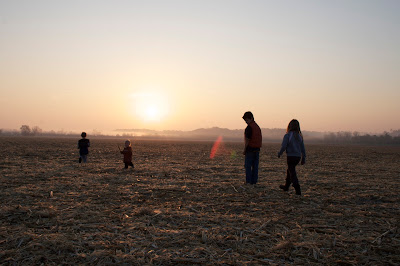 |
| morning walk |
 |
| raising sons- morning light |
These images show an important landmark in my life as a mother and landscape photographer. Working as an artist with five beautiful children is a joy. Like me, my kids love pictures. My husband and I have four sons and one daughter. We enjoy living in the country where there's plenty of room to run. Some people feel at home in their neighborhoods or apartment complexes. We have found our home in the fields and woods along the Missouri River. Not that we live in a mud hut or anything, but we're not scared of working hard and getting dirty. These pictures are sort of a hybrid of the two main types of photography I do. First I'm a mother, or first I'm a landscape photographer. It's sort of like the chicken and the egg, which came first? Anyhow, they are both such a big part of my life that joining the two, my children and my art into one image was an epiphany. I know I'm not the first mother to do this but I wanted to share.
Subscribe to:
Posts (Atom)
